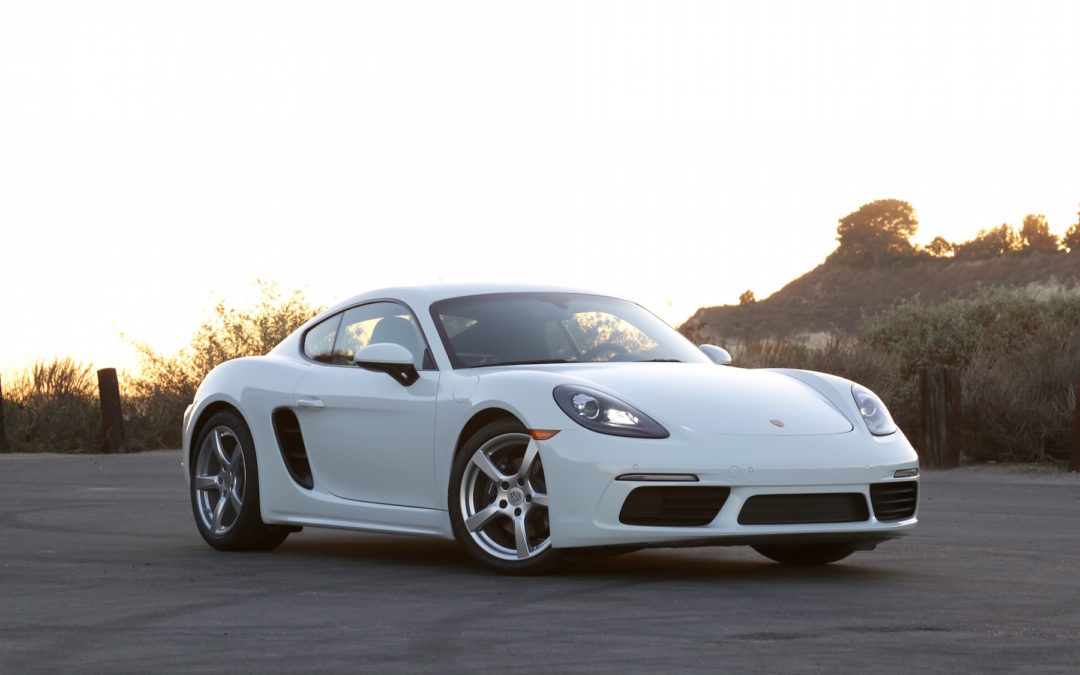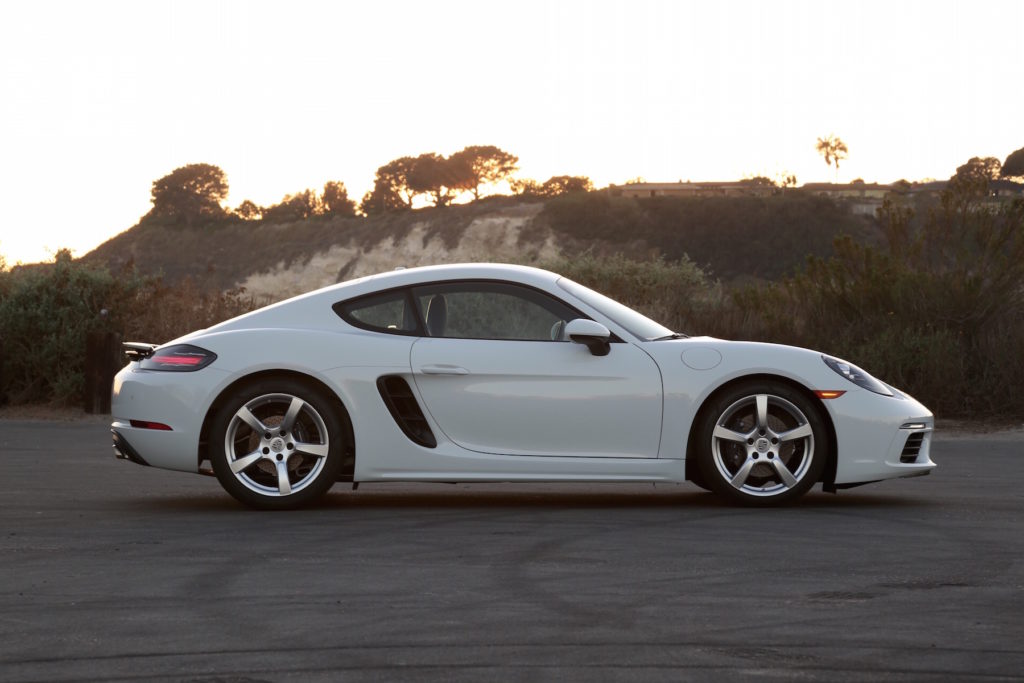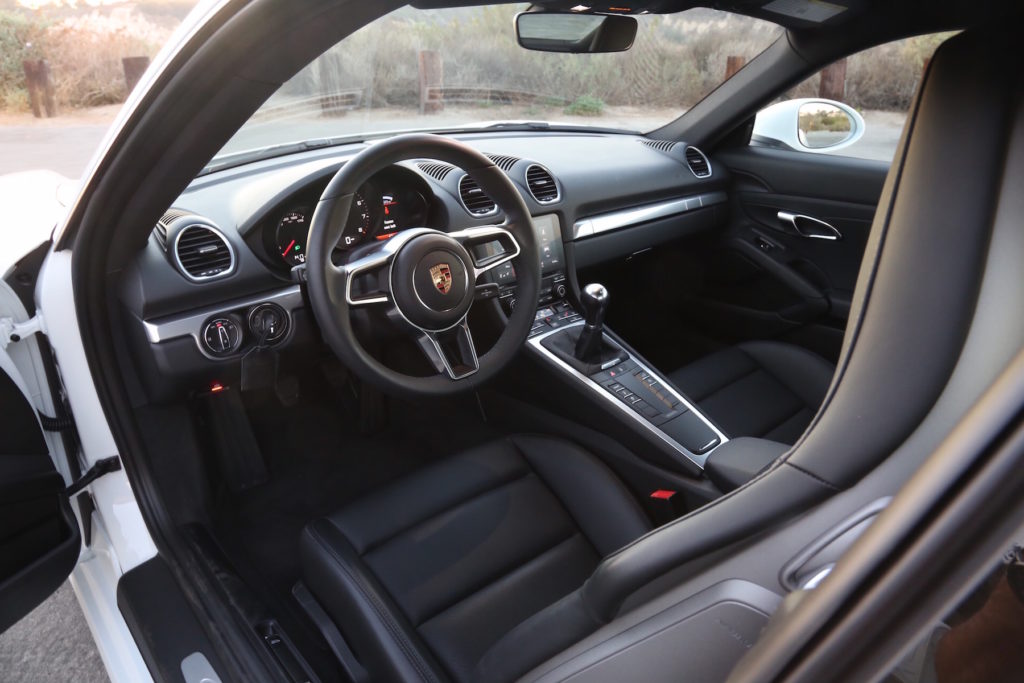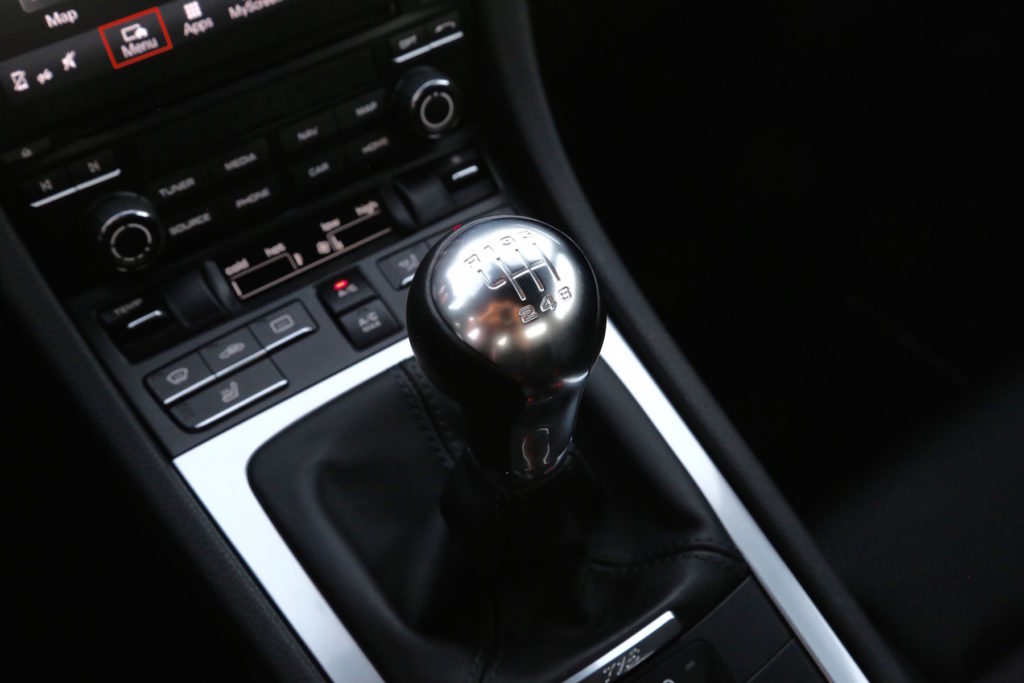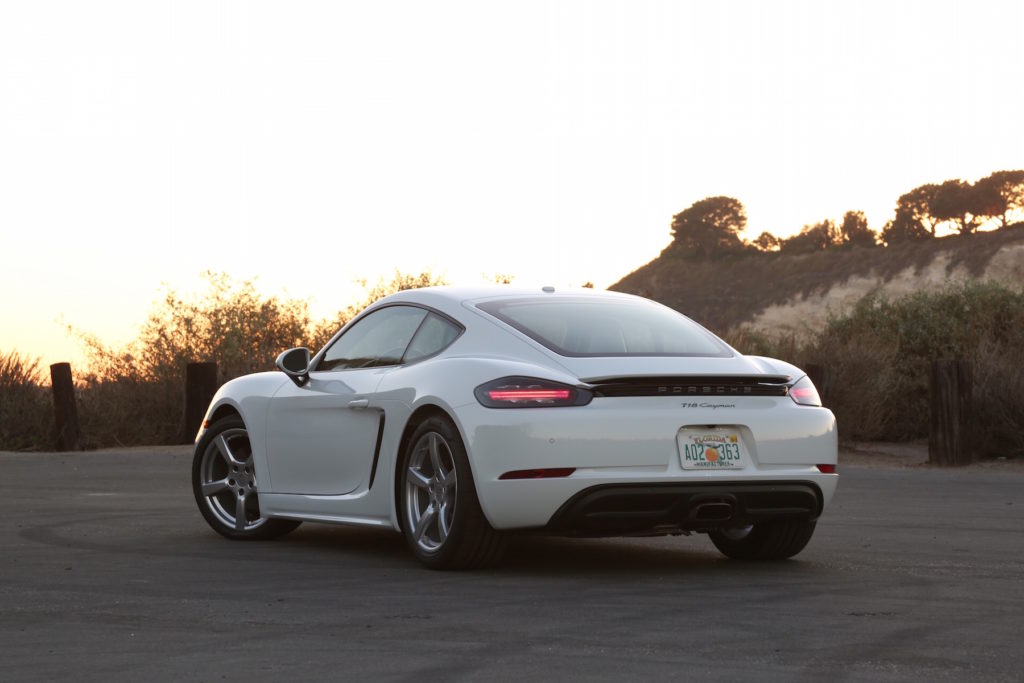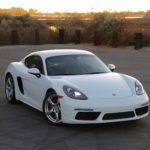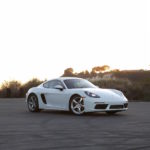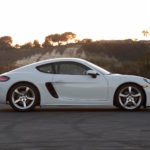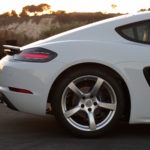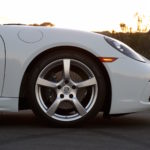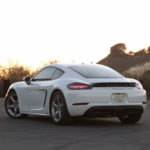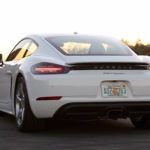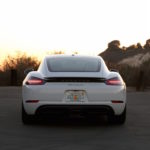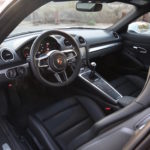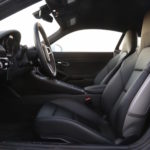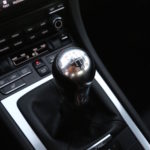Since 2006, the Porsche Cayman has gone where the 911 could no longer venture. Iconic, revered, and, with each passing year, more viciously fast than ever, the 911 continued to move upmarket to fend off an increasing number of sports and super sports car competitors. Eventually, an opening formed beneath the 911’s transcended performance. Here, Porsche planted its compact, mid-engine contender.
So decisively did the Cayman best its rivals in terms of driving precision and engagement that enthusiasts began looking elsewhere for competition – even among Porsche’s own product stable. The link between Porsche’s 911 and Cayman was a flat six-cylinder engine, a choice of manual and dual-clutch gearboxes, and Porsche’s renowned chassis engineering. The differences amounted to engine placement (mid-mounted in the Cayman, and rear-mounted in the 911), size, and power output – an aspect Porsche monitored closely. Whether the Cayman ever cannibalized 911 sales or not (unlikely, given the 911’s sales success), the German automaker decided to separate the siblings a bit further.
Porsche’s all-new 718 Cayman is quicker, more efficient, and more upscale than its predecessor – raising the bar for the brand’s “entry-level” performance products. With a name derived from the company’s rich racing heritage, the 718 Cayman is built on high expectations. Read our full 2018 Porsche 718 Cayman Review below to see if the revamped coupe hits the mark.
New for 2018
The 2018 model year doesn’t bring any significant changes, but since we haven’t yet reviewed the 718 Cayman, let’s quickly cover 2017’s updates. Most notably, Porsche replaces its flat six-cylinder motor with a turbocharged flat four-cylinder – still mid-mounted behind the cockpit. Porsche says this change effectively makes the base 718 Cayman as quick as the outgoing Cayman S (for about $10K less). Other mechanical tweaks include a new steering rack, which is derived from the 911 Turbo’s system. Visually, the 718 Cayman is distinguished from its predecessor by new front and rear bumpers, fenders, headlights, and taillights. To align with the company’s standardized upcharge for convertibles, the 718 Cayman is now cheaper than the 718 Boxster.
Styling and Pricing
The love-it-or-hate-it rule of Porsche’s 911 is that regardless of what changes under the sheet metal, the car’s iconic shape will carry on. The same is true for the Cayman (so far). Like the 911, the Cayman has grown and become more refined over the years, but is still instantly recognizable. Short overhangs, a gently sloping roofline, a prominent side air intake, and unfussy front and rear fenders characterize the 718 Cayman’s poetic physique.
Porsche’s styling tweaks to the 2017 model bring the Cayman back in line with the 987 generation’s fluidity while adding modern touches like thin LED taillights, new 18- and 19-inch wheel designs, and re-sculpted bumpers to mirror the company’s latest design language. The mature aesthetic pleases from all angles and attracts sufficient attention around town. More elegant than the Jaguar F-Type and more charismatic than the Chevrolet Corvette (two of the car’s key rivals), the 718 Cayman crafts the perception of a more premium product.
The 2018 Porsche 718 Cayman is offered in just two trims, with a laundry list of packages and standalone options. The base Cayman starts at $55,300 while the higher-output Cayman S kicks-off at $67,700 (both prices exclude a destination fee of $1,050). The entry-level 718 Cayman is the least expensive of its main competitors, though it lacks some common luxury amenities like automatic climate control and Apple CarPlay as standard. Popular add-ons include the Premium Package ($3,700) with full-leather 14-way Power Sport Seats, Bi-Xenon headlights, dual-zone automatic climate control, and seat heating, Porsche’s PDK dual-clutch transmission ($3,210), Porsche Connect with Apple CarPlay ($1,020) and Porsche’s Active Suspension Management (PASM) for $1,790.
Interior Technology
Standard issue for every 718 Cayman is Porsche’s Communication Management System (PCM) and a 7.0-inch center display. This cutting-edge infotainment is one of the most user-friendly and quick-responding systems we’ve tested, with clear visuals, touchscreen controls, and optional voice commands. PCM also works with a fully digital and reconfigurable driver gauge to show navigation, audio, telemetry, and more. An optional head-up display would be a nice touch, but a quick glance at the instrument cluster is enough to get your bearings.
Other technology highlights include standard Bluetooth calling/audio, two standard USB ports, available 3D navigation ($1,780), a 10-speaker Bose sound system ($990), 12-speaker Burmester sound system ($4,690), Porsche Connect ($1,020) with Apple CarPlay and an app for remote control of climate, door unlock/lock, and other settings, and 4G LTE Wi-Fi. Unfortunately, Android Auto is not available.
Cabin Comforts
What the 718 Cayman lacks in quantity of standard features, it more than makes up for in quality of interior construction. A zero-option Cayman is more uniquely inviting than both the Corvette and F-Type, while Porsche’s corporate cousin, Audi, sets a comparable bar for cabin coolness with the TT-S.
Disrupting the humdrum of an all-black interior is no easy task, but Porsche’s blend of brushed metals, high-quality plastics, inspired air-vent, door handle, and center console designs, and sumptuous leather wrapping pours on the intrigue. Every drive is an opportunity to discover more of Porsche’s ingenuity and manufacturing excellence. In particular, the 718 Cayman’s three-spoke steering wheel and manual shift lever – both wrapped in soft leather – are tactile delights.
Standard partial leather or optional full-leather sport seats walk the fine line between comfort and support beautifully. Head and shoulder room is generous, and while the mid-engine layout leaves no room for a pair of rear seats, most 2+2 setups are largely useless for anyone except small children.
Cargo capacity is astonishingly good as well, with a combined 14.9 cu. ft. of space from the front trunk and rear hatch (tying the Corvette for most in-car storage). Furthermore, cubbies beneath each C-pillar offer hidden storage for valuables. For some anecdotal evidence of the Cayman’s unassuming practicality, our airport test run fit one checked bag, two carry-ons, two snowboards, and one perplexed girlfriend with little fuss.
Driving Dynamics
Comfort and convenience are essential ingredients for just about any successful vehicle, yet Porsche sports cars could get away with backbreaking seats and cardboard dashboards if only the driving dynamics stayed true to form. That the 718 Cayman is sublimely livable is merely a bonus when you consider it’s peerless performance attributes.
Let’s first address the enthusiast-bred elephant in the room. Yes, the flat-six powertrain is no more. Yes, it was a tremendous motor, with unmatched refinement and character. Yes, the engine note was wondrous. So, let’s pour one out, shed a tear, and perform whatever ceremonies we find necessary to bid a fond farewell – for the 718 Cayman’s new engine deserves unbiased appraisal.
With 2.0-liters of displacement, four-cylinders, and forced induction, Porsche extracts 300 horsepower and 280 pound-feet of torque – gains of 25 hp and 67 lb-ft of torque over the retired six-cylinder. 0 to 60 mph takes just 4.9 seconds when equipped with the six-speed manual, or 4.7 seconds if drivers opt for Porsche’s dual-clutch automatic. On paper, these figures are underwhelming when juxtaposed with the all-wheel drive TT-S (4.6 seconds) and V8-powered Corvette (3.9 seconds), however real-world tests show Porsche’s estimates as conservative by as much as half a second.
Around town, the Cayman’s turbocharger spools leisurely, entering the performance equation only beyond approximately 2,200-rpm. This waiting period, however, is rewarded with prodigious surges of torque that feel like mid-throttle launches. Quietly and efficiently the 718 Cayman negotiates the daily grind, anticipating a chance to stretch its legs on your weekend canyon run. The average of these activities earns an impressive 24-combined mpg with the manual and a couple extra miles per gallon with the PDK – directly on par with the F-Type 2.0-liter and TT-S (the Corvette lags at 19 mpg).
Flipping the switch on the 718 Cayman’s performance is one of the most satisfying experiences in modern motoring. To appreciate the car’s incredible balance and precision, one must dig as deep as his or her courage lasts; fret not: your own limits are not the car’s.
Steering, braking, handling, and yes – even the engine – complement one another beautifully. Sharp turn-in matches a tight, responsive chassis; biting, fade-resistant brakes hold a thrust-happy engine in check; fluid, precise gear throws leverage perfectly positioned pedals for heel-toe maneuvers. Unsettling the Cayman feels impossible, and even when forced to over steer (made possible only by disengaging traction control) the vehicle remains tractable. It’s all wonderfully addictive.
Each of the 718’s performance elements is superb, however, the electric steering system is revolutionary. The learning curve for rivaling e-assist racks appears too formidable when judged against Porsche’s efforts. Miraculously, the 718 Cayman offers feedback – genuine communication – between the tires and the driver’s hands, empowering him or her to find handling limits without unwittingly exceeding them. What a concept.
Indeed, this is the Pringles can of sports cars: “once you pop, the fun don’t stop.”
The Verdict
For the enthusiasts still condemning Porsche’s decision to replace its sweet six-cylinder with a turbocharged four-cylinder, we can only recommend a test drive of the new 718 Cayman. Ideological issues with the sports car’s powertrain will quickly ease as you experience an improved blend of power, precision, and poise. Porsche is not abandoning its purist audience; if anything, the Germany automaker is offering them a sharper picture of mid-engine, rear-drive, manual-shifting satisfaction.
Within the 2018 Porsche 718 Cayman’s price bracket, there are higher-output and more affordable (equipment-matching) sports cars, but nothing comes close to the Cayman’s balance and engagement. If you’re asking if there’s a better driver’s car, the answer is a firm, “no.”

